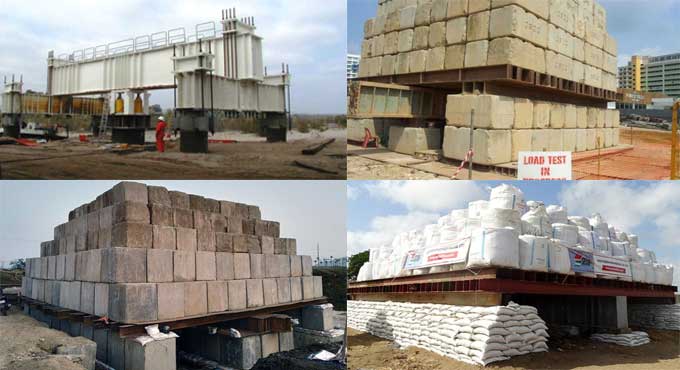
The Analysis of Pile Foundations Using Various Types Pile Load Testing
Pile foundation system designs using a simplified model of a more complex real world. That is an engineering process. A pile foundation always includes the calculation of its axial bearing capacity. For estimating unit base and unit shaft resistance values, several methods are used.
The main methods rely on fundamental soil properties, including the angle of friction, or on in situ tests, such as standard penetration depths or cone penetration depths. A thorough understanding of the difference between a model and reality, of its limitations & the feasibility of various methods, is essential.
Theory
Depending on the local building codes, the pile load testing procedure may vary from region to region. It consists of driving a pile and loading it with a load. It shows the pile load test in an extremely simplified manner. Despite this, each major component required to perform a pile load test shows.
Apparatus
When performing pile load testing, the following apparatus is required:
- A driven pile
- A load usually steel and timber
- Hydraulic jack
- Deflection gauge
- A load indicator
The Pile load and its Settlement
Structural piles hold up a steel beam. The pile test is to place between the hydraulic jack and the steel beam. During the expansion, the jack pushes the steel beam upward while pressing the test pile downward.
The response is non-linear in general, and it becomes softer or degrades as the load rises. Geo-technically, the pile is approaching failure as it fills with load. A pile's failure may result from settling by 10% of its diameter, as defined by some codes. If the serviceability limit state is considered, this criterion becomes somewhat lenient for large diameter piles.
As a result of pile settlement resulting in differential settlement between supports, settlement acceptance requirements must be rigid because a tall superstructure will experience an amplified tilt, which is a grave concern. A building's settlement could also disrupt utilities, such as pipes and cables. Therefore, it is usually necessary to settle for a much smaller amount.
Types
In general, pile load tests can be divided into two types:
- Preliminary pile test.
- Working pile test.
Preliminary Pile Test
Before the start of piling work, a preliminary pile test conducts to verify design parameters. The test pile instruments to verify assumptions regarding shaft friction and bearing end-stress. Verification of pile location requires drilling a borehole near the pile location to determine the type of soil and layering.
The pile?s load transfer can determine by calculating the force for each segment along the length of the piles. Working piles should also install using the same pile installation method. Typically, preliminary piles are loaded over three times the working load to determine shaft friction and bearing capacity accurately.
Working Pile Test
Working pile tests are conducted during the piling process to make sure the piles are installed correctly and are of high quality.
Tests confirm that installed piles meet strength, bearing capacity, and serviceability specifications with acceptable settlement according to design specifications. Pile heads are monitored and recorded as the load and settlement progress on the piles. It is important to recognize that the rate of settlement at higher loads may be greater than the value at two times the working load provided for settlement limits for working piles.
Analysis
Preliminary pile testing usually performs before piling starts with working pile testing completed during piling or after substantial piling is completed. The Preliminary pile test and the working pile test are important in the case of limit state design such as Euro-code 7-EC7 since they allow designers to employ less conservative partial factors in reducing shaft friction and end bearing, making designs more economical. The use of a higher resistance factor due to increased reliability may also be possible in LRFD design or AASHTO specifications.
Wrapping it up
Pile foundations often employ pile loading tests. It is, however, very common to require pile load tests in compliance with regulatory guidelines and customary practice.
In addition to building more economical piles using pile load tests, the designer can check the quality and workmanship of the piles and determine whether they will perform according to load settlement requirements.
To get more details, watch the following video tutorial.
Video Source: Terraconconsultants


